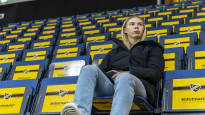Ice hockey player Elisa Holopainen, 22, got into top shape after a long rehabilitation period. Tanja Poutiainen-Rinne, the alpine skiing star of the past years, was the sparring partner.
One of Finland’s best female ice hockey players Elisa Holopainen will return to the World Cup arenas in the USA next week after a year’s break. The 22-year-old striker missed the games played last year due to a knee injury.
Kuopio’s KalPa player was injured at the beginning of the year and had to undergo knee surgery.
As is often the case with a top athlete after a long injury, Holopainen also had a long rehabilitation period ahead of him. He returned to the puck after nine months last October.
For a top athlete, injury is always a hard setback. However, Holopainen received really valuable and famous help, because he had an ex-alpine skier by his side Tanja Poutiainen-Rinne in the role of an experience expert.
Poutiainen-Rinne, who has won Olympic silver and four World Championship medals in her career, works at a rehabilitation clinic in Rovaniemi. A physiotherapist familiar to Holopainen from the national team Pasi Lambacka works at that clinic.
Holopainen took care of the rehabilitation mainly in Kuopio.
– Tanja and Pasi made the programs for me. I always went to Rovaniemi regularly to check that everything was in order, says Holopainen.
Not just by the eyes
In the early stages of rehabilitation, Holopainen learned to walk and run again.
– The main goal was to gain strength in the leg. I actually did everything from side to side, Holopainen opens.
Poutiainen-Rinne says that the content of rehabilitation is very versatile. Athletes are given tests related to mobility, balance and strength, for example.
For example, strength results are tested regularly.
– It is important, because it gives us direction on how the process will proceed. Don’t just rely on your eyes and feelings. We will make sure that there are no shortcomings in any area. Let’s focus on thigh, buttock and mid-body strength, among other things.
Strength training is an essential part of the rehabilitation process. Skill attributes are not forgotten either. Coordination and balance are maintained.
– There must also be functional strength. Especially in hockey, which is a sport that requires explosive strength and changes of direction, the muscles must be ready to react in time. It is not enough if the strength is slow or the balance and coordination are weak. This exposes you to new injuries, says Poutiainen-Rinne.
Holopainen is very satisfied with his rehabilitation.
– When I got hurt, I knew that there was a long rehabilitation ahead. I thought that when I get back to playing, I’ll be ready. I think I’ve succeeded really well in that.
Back to the medals
Holopainen’s season ended with a bronze medal in KalPa’s shirt. Holopainen rehabbed in good shape, as in the regular season he scored 57 points in 19 games and 14 points in the playoffs.
– It felt a bit like he hadn’t been gone. The condition of the knee is good. Sometimes you may experience symptoms during heavy exertion.
Poutiainen-Rinne experienced severe injuries during her own career. He is able to act as a kind of sparring partner for rehabilitating athletes.
Poutiainen-Rinne says that she would gladly use extra time for that.
– I am certainly a peer support for many. I have experienced both knee and leg injuries. I know what it means to come back as an athlete and get rid of the body again. We are very aware of the importance of the spiritual side.
The Naisleijonat were on a high at the 2019 World Cup home games in Espoo, when Finland came really close to the championship. Since then, the game and the results have remained thin.
It’s been three years since the last medal place.
– I expect to be able to take the international step. I hope as a team that we will be able to return to the medal position, says Holopainen.
